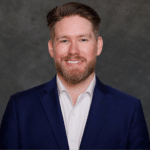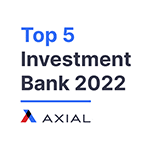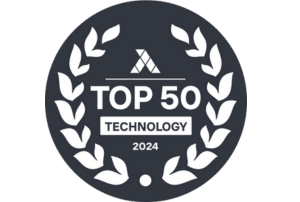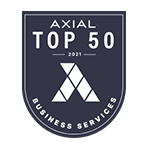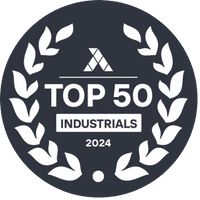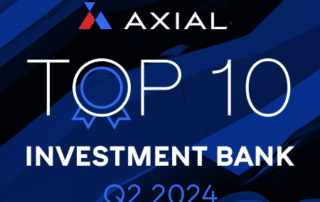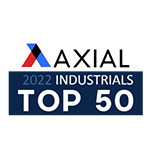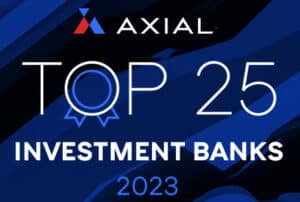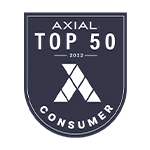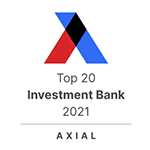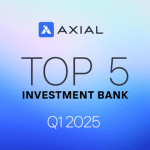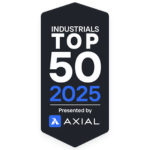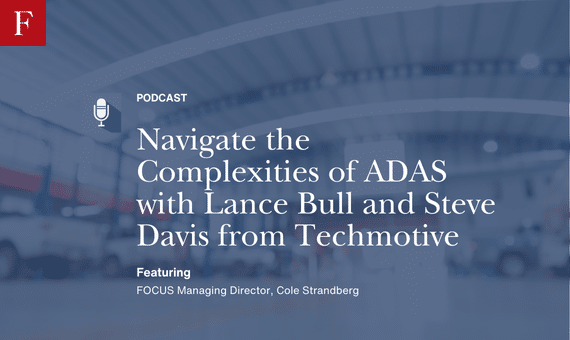
Navigate the Complexities of ADAS with Lance Bull and Steve Davis from Techmotive
In this episode of the Collision Vision driven by Auto Body News, we’re joined by Lance Bull and Steve Davis from Techmotive, a company dedicated to helping collision repair shops navigate the complexities of ADAS calibration with the right tools, technology and expertise. ADAS calibration has become one of the most critical — and sometimes daunting — services in collision repair, and Lance and Steve are here to demystify it. We’ll dive into what shops need to succeed in this space, discuss the role of proper equipment and processes, and explore how Techmotive is making it easier for operators to thrive in this rapidly evolving industry.
Cole Strandberg: Looking forward to a fun conversation. We had a a brief chance to get to know each other and and some pre show conversation. But from the top we’d love to learn more about you and and tech motive. So I’ll kick it off. Who is Tech Motive and what’s the mission and the inspiration behind the the business?
Steve Davis: So Tech Motive is a a company I started back in 2012. I actually started it. I was managing a Body Shop. I was actually managing a Body Shop that Lance owned. And really we started just so I could get my own cars out the door. We’re having a, a lot of problems with, you know, sending cars dealers and, and not being able to get them out the, the door efficiently and effectively. So of course insurance companies were not happy with it and customers were not happy with, with the cycle time. So we, we decided to kind of go into this thing to really service our own vehicles and landscape me the opportunity to do it. And we, we started just working on the cars for our own shop. Couple years later, I decided that I couldn’t stand working for him anymore. And I, I spun off and went my own way and we started servicing other body shops. And so our, our, our focus has really always been, and it still is today, just doing whatever we could do to help the customer get the cars out the door in a safe and efficient manner. So that hasn’t changed. It’s, it’s really just about doing whatever the shop needs to get done in order to make sure that these, these cars are still, you know, flowing smoothly through the shop. You know, obviously today there’s, there’s been a huge focus and starting really with us, it was 2017, we started really seeing the technology changes and started focusing more and more on ADAS. But that that even today, that’s not our primary focus. Our primary focus is whatever the shop needs to help with to get the car out the door.
Lance Bull: And Steve’s, Steve’s a little modest. He saw this coming. I mean, he really did. He and I had a business partner that a lot of people in the industry know. His name is Dan Dutra. And these two guys, one were, you know, always at the sort of the bleeding edge of where the industry was going. And, and, and my, you know, my business partner, Dan had this passion to make sure cars were always fixed, right. And, and that we, you know, that we have one of the, one of the best shops, not just in our market, but in the, in the industry. And, and Steve was watching the stuff go through and, and really understood the cars had to be done the right way. And so these two guys were, I was the money guy, right? They were the, they were the technical, the, the technical guys. But you know, they really understood that the, the complexity of, of vehicles and where it was going, that it was not just business as usual anymore. That, that, that you really had to pay attention to what the OEMs were doing and how they were building cars and how they and how they wanted these vehicles repaired when they were when they were damaged. And, and it was then that these two guys were really pushing for our facility to move to this space of, you know, OEM correct repairs all the time. And, and again, really Steve and, and Dan, they saw this trend coming down the tracks. I I mean probably way ahead of almost anybody else in the industry.
Cole Strandberg: Feels like a, a, a bit of a new frontier at the time you guys were really getting into this world. You, it’s funny you say the, the year 2017, that’s sort of when I recall hearing about ADAS and, and, and it seemed like the technological advancements in vehicles really started to increase around this time, even relative to a lot of increases over many, many years. So talk to me, Steve, about kind of what encompasses whatever it takes, What are the services we’re talking about when we talk about whatever The Body Shop needs to get vehicles out the door?
Steve Davis: So while our focus has always been on the technology side of vehicles, you know that that’s where shops tend to have their most, most problems is there’s, there’s a lot of mechanics out there that can do suspension or they can do you know, diagnostics on engines or, or whatever. But you know, we, we got involved with Tesla early on. So you know, we’ve, we’ve got a lot of experience with battery electric vehicles, hybrid electric vehicles and of course the big, the big thing in the industry right now is of course, ADAS, right. So anything that involves technology we’re really heavily involved in. But when I say anything, we, we listen to our customers and whatever they have a pain point with, we’ll, we’ll explore whether or not it makes sense for us to be involved in it. So we do do, we’re a full service facility in most markets. So we do suspension work, we do alignments, we do calibrations. And in some markets we, we do glass because we’ve, we’ve had certain markets where the customers have a, a, a need or for good service around glass. So whatever I say, whatever the customer needs to get the job done, it’s literally whatever they need to get the, the job done. If it makes sense, obviously, as it makes sense for them, as it makes sense for us. But so, yeah, we’re, we’ve got our hands in a little bit of everything. But it’s, it’s really when we integrate into a shop, we, we try to figure out exactly what their needs are. If it’s, if it’s help with getting paid and, you know, it’s talking to the insurance companies to, to make sure that they can get their claims processed properly. We, we get involved in that. It’s, you know, we can be as involved in the repair process as the customer wants or as little as they want. We do have customers that just want to call us and dump the car on us and tell us what they want done and, and we do that too. But we we have a lot of success when we fully integrate from start to finish. I mean, we’re talking from the day the car drops off until the day that the car leaves. There’s some shots that were involved in every piece of that process.
Cole Strandberg: Very good. And and you’ve sort of led me into another question with a partial answer to the next question I would have for you, which what differentiates you guys versus some other competitors out in the space and what is kind of that go to market business model that you guys have and how you work with body shops?
Steve Davis: I would say there’s probably three major factors differentiate to us. It’s that piece.
Lance Bull: Where we’re willing.
Steve Davis: To kind of get involved in wherever they’re having pain, that differentiates us quite a bit. The fact that this company’s led by people that are out of the industry. I, I started out in collision in 1990. I was in The Body Shop. My first job was as a, a prepper. And back then we wet sanded on cars. And my first day I wet sanded on cars until my fingers were, were bleeding. And I’m sure there’s plenty of people out there that have had that same experience and it’s not fun. But I, I worked my way up. There’s not a job in a Body Shop I haven’t held. In fact, whenever I was managing body shops, a lot of times I help every job simultaneously in the same day, from washing cars to delivering cars. So you know that the fact that we understand our customer and what their needs are at a very high level. Lance has been in the industry a long time as, as both the consultant to body shops with paint companies and he’s, he’s owned his own body shops. So he’s, he’s got a lot of experience there. And so he, he helps with that. Yeah.
Lance Bull: I mean, so it’s not just the technical piece. We, we understand the profit, profitability issues they’re facing, some of the business issues, cycle time and return on investment and, and all these things. It’s not just the fact that we are taking the vehicle and providing a service that that needs to be done in the correct repair of that vehicle, but we’re trying to do it in a manner that maximizes the the business needs of the of the shop owner in the repair of that vehicle.
Cole Strandberg: Understand completely. Yeah, go ahead, Steve.
Steve Davis: Sorry, I would say the third thing that separates us is the fact that we are dedicated to using the OEM process procedures, you know, scan tools. Whenever the OEM certifies a new a new tool, we’d look at it bringing that into the system. Like, you know, recently hunters started getting certifications with their new Ultimate 8 as the true point from John Bean. Snap on has gotten some certifications. We have guys that have been sent to Ford for the Ford certification for ADAS. We’re we’re dedicated to whatever comes down the pipe from the O ES that that’s what we’ll do. So that there’s, there’s some people out there dedicated to that, but it’s, it’s honestly throughout most of the industry that’s not common.
Cole Strandberg: The term frontier just does continue to come to mind. You guys were some early movers in the space, no question about it. Lance, from a business case, how did you at the time view the opportunity for a concept with this marriage of of general technology and ADOS calibration and how do you view the runway now in the industry now as it begins to mature?
Lance Bull: Yeah. So that, that’s a great question because this is really how we came to, you know, this, this place today. And, and again, you know, we rollback not that many years ago, but at the time, at, at the time me and my business partner, we had three shops. This technology was coming in and, and again, I’d, I’d like to take credit for it, but it was really, it was really Steve and Dan that said, Hey, this is, this is necessary, we need to do this. And here’s how much it’s going to cost. And I looked at it and I said, yes, I agree intellectually that we have to fix these cars this way and this technology must be integrated into our process. But I just, I, I don’t see the ROI, how do I spend what was required to do it correctly at that time? And, and, and of course, that’s even more now for my one operation. And again, we, we were a good sized facility. I mean, we were, you know, we were three stores doing a lot of it, lot of a lot of cars going to get 400 cars a month at at the peak Navy somewhere around there. And and I just looked at it and I went, man, if every single one of these cars needs this service, I still can’t justify the dollar spend, the ROI on the equipment, much less the space required to do this and to do it properly. And again, that’s where the idea came that well, Steve could go into business, he could he could make this investment and then he could advertise it over my facilities. And in fact, what we ended up doing was re renting a building we had given up in the recession. And in a way we re rented that space and Steve went in there and optimized it and sublet a piece of it and and moved his operation in simultaneous to us opening up an aluminum repair facility in in the remainder of the space. But Steve was able to do our work, process all our work and then all the other quality minded shops around us, he was able to bring the working through as well. And that’s where it made sense, right when you can, when you can spread that cost over a number of operations, then then the model starts to make sense. And it allowed Steve not only to, to repair my cars correctly, but take on the task and, and the not inexpensive task, if you, if you will, of staying on top of the technology, which again, is evolving so quickly. And, and it’s not a make this, make this investment one time and spend these hundreds of thousands of dollars one time and that’s it, you know, run it out for the next 10 years. It’s not a, you know, it’s not a frame machine, which, you know, I could, I could electrolyze, right? I could, I could say, OK, well cost this, but I’m going to, I’m going to get 10 years of life out of it or a spray booth and process this many cars and make sense. This was something that was effectively technologically potentially going to wear out every year, right. And the investment was going to have to be made. So that was that was really the genesis of tech motive. It was a financial decision for for me and for Steve where it made sense for him to leave my organization, but but but to still stay connected from a business standpoint and and there was a real synergy there.
Cole Strandberg: Such a great story and so many different rabbit holes I’d like to go down and so many different directions we could take it because there’s a lot to that story. First off, I mean, the concept of what you did in that one facility is very telling of the times. You’re talking about AD OS calibration and some of this new technology, talking about an aluminum facility, which obviously that was all happening along the same time. And then the ROI not having a sense of how long these pieces of equipment are going to last or, or be relevant and certifiable makes it such a challenge. I, I go back to my time in the equipment industry. I was at Seema with Snap On back in 20/16/2017. What all of this was starting to come out and they just painted a picture of man. This is a great opportunity for the next 5 to 10 years after that, who knows. And so it made it tough to justify the investment not knowing what the future was going to hold. So with that and shifting gears a little bit, you made an ROI based decision to invest in this, in this model. And I think a lot of shops are considering that same calculation, albeit a little bit later in, in the lifespan of of this technology. How do you and, and this is for both you, Lance and Steve, how do you advise shops when they’re considering whether or not to bring this in house to open their own facility or to partner with an organization like you? How do you advise them on looking at that?
Lance Bull: Well, so I’ll start with it from the from the money question because again, this is where it all started. And, and look to be certain in 2025 right now, much more of the fleet requires this process than in 2017. So you might say, well, maybe the ROI justifies it now, maybe more so than in the past. But and, and, and I console shops on this on a regular basis. And, and you know, I like to start from, I like to start from simple and then go to complex, right? Because if the answer is no right off the top, then maybe it’s just no. But if we just do it, if we just do a thumbnail or a cocktail napkin analysis of bringing, bringing ADAS into your facility, here’s what you have to consider. And let’s let’s say for the sake of argument and Steve, you can, you can correct me on this, But if you want to do proper OEM 8 ass calibrations for the broad range of vehicles that you’re going to have in the typical collision repair facility, it’s really 1/4 of $1,000,000 to maybe $300,000 investment. By the time you buy the tools, prepare the space, you know, hire and train the people to to to really calibrate that first car would is a quarter $1,000,000 fair.
Lance Bull: So, so you’ve got that right. So you’ve got that, that, that investment you have to make. And so you know, how long will it take you to recapture that? You know, what is the, you know, what does that do to your sales and your flow and so forth? But let’s look at it. Let’s look at a typical Body Shop and I’ll use mine from a few years ago. And we valued, we valued our production space, our stalls. They would typically generate across the, the, the 3 1/2 stores, we had three stores and then a separate aluminum facility. Those stalls were worth about $40,000 a month in sales to us. So in an average 20 day work month, which is, you know, pretty typical. And so again, we’re just using round numbers. That’s $2000 a stall that I had to give up to do calibrations in my stall and earn that money back. And it really takes 3 stalls to do this properly, so. Again, you know, that’s 6000, that’s $6000 a day. And there’s what we said there’s 20 days in a work month. That’s $120,000 in opportunity cost to do collision repair, which I was really good at and we were really efficient at. I would have to give that up for those 3 stalls to do calibrations. And I didn’t see that I would be able to generate $120,000 worth of internal sales in those stalls. And look, you can’t do calibration and repair in the same same space. I mean, I went, I went to public school, so I might not be the sharpest knife in the drawer, but you can’t have two cars in the same stall at the same time. So you’re either doing collision repair work there or you’re doing the calibration work. We were really good at collision. We understood collision. We probably could have gotten good at calibration, but it wasn’t our core business. And so not only was I going to give up that $120,000 in sales of what I knew how to do and I knew that I could bring that work in, my shop was always full. So I couldn’t replace those sales. But then I hit the ROI of the quarter, $1,000,000 is probably more than that now to recover and, and again in a, in an investment that I didn’t know was going to be relevant in one year, 2 years, three years down the road. That was a, that was and still is a big question mark when you’re going to make this decision. So for me, when I boiled it down to that, it was a no brainer. It was like, this does not make sense. I can spend, I can spend 0 and have Steve do it and sublet it and then mark it up and, you know, and to the, to the insurance company or take the discount however you want to look at it. So for $0.00 investment I could make X. And again, my simple math is you take any, any number and divide it by zero, that’s Infinity, right? Or I had this huge expenditure that I was trying to recapture in, in stalls that could generate, you know, $120,000 a month in sales. For me, it just, it became a very, very, very simple decision for me that this was something that I was going to farm out rather than try to bring in house.
Cole Strandberg: I love the way you look at that and landed on taking that approach because I think it makes sense. I think a lot of folks are landing on the same answer whether they think about it in the exact same way or not. Steve, paint a picture for us on what exactly that 250 to $300,000 looks like. What is the investment? Obviously there’s facility prep, equipment, training. Walk us through the headache that that you’ve essentially taken off.
Lance Bull: Of your customers.
Steve Davis: So I, I think you have to, First off, you have to decide how you’re going to approach this process are, are you going to go 100% aftermarket? And you know, because that, that is the cheaper way to go. So the first question is, do you or don’t you have any OEM certifications? Because you have to take that option off the table. If you have any OEM certifications, they’re, they’re not going to allow you to use aftermarket scan tools and equipment. If you’re, you’re not, if you have OEM certifications, the, the second thing you have to do is you have to ask yourself, do you have enough space? Lance kind of alluded to three stalls that’s probably actually light when you look at it. You, you, you have to take into account that technically don’t recalibrate properly. You have to have a level floor. Now some of the new machines that are more expensive that factor in to the more expensive scenario, they, they do, you know, measure the floors and, and like the the newer stuff, it uses lasers to measure the floor and then it takes that into account and it can move the targets into 3D environment. But that piece of equipment that does that is $150,000 by itself. And you know, that’s just the beginning. So if you use aftermarket, you still need a level floor. So you have to make sure that your floor is very, very level within, within like a millimeter or two in like a 5 foot area. If you have to decide, you know, calibrations and alignment alignments go hand in hand. So you’re going to go into alignments because that’s, that’s another investment that’s more space. Most calibrations, some are done in alignment machine, but most of them are not with with like a Honda front radar, you need 33 feet from the front bumper. That is clear open space. It has no obstructions whatsoever. And if you can’t have any metal, you can’t have anything. I mean, and that’s that’s where most people start losing it is they don’t realize that it doesn’t end where you set the target. It ends at the, the, the where the radar is it going to pick up something to interfere with the calibration? Honda says it’s 33 feet from the front bumper. So now you’re looking at, you had the length of the car, so now you’re talking 50 feet. If you’re going to do blind spots, you need about 29 feet out to the side of the car. So now you’re looking at a bare minimum of somewhere around 50 by 30, right? So do you have that much space? There’s just like so much that goes into this, the plan.
Cole Strandberg: You’re kidding. Direct investment opportunity cost, I think as as Lance alluded to with with efficiency and bays and all that stuff and time, there’s a lot going on for sure. And I want to get into kind of how body shops do work and, and can increase working efficiently with outsourcing this because I think a big concern for many is it interrupts process and flow and and delays delivery time. I want to talk about that before I do. You both seem to feel pretty strongly that OE is the way to go. Talk to me about why and how how you come to that conclusion and do your part in convincing everyone else the same.
Lance Bull: You know, it’s, look, it’s a, it, it is definitely look, it’s a, it’s a paradigm there, there, there are people that, that, that repair cars the way that, you know, we believe, but we really are what the car, 100% of the vehicles you touch have to be done 100% correctly. There is no, there’s no tolerance on that at all, at least in our world and in, in my, you know, in my collision repair facilities. And I, you know, I reference back to my business partner Dan. He, he was that way. It was like, look, we’re going to do this right or we’re not going to do it at all. And every car that goes out has to be a car that we would put our moms and our sisters and our daughters in. And the source is the person who built or the entity that built them. So when Honda builds a car, when Ford builds a car, when Mercedes builds a car, they’ve they’ve invested millions and billions of dollars to build that car and, and almost equal amounts of money in time and research and how to repair them when they are damaged. So why would you go to any other source them for direction on how to prepare the car? And so if they’re specifying the process or they’re specifying the tool, you have a hard time convincing me that something else is just as good or almost as good. And frankly, I’m not going to put my daughter in a car that is almost as safe. It’s it’s a, it’s not a debate for.
Steve Davis: Me so I’ll, I’ll, I’ll give you my short answer and then we can get into the so 2 words. John Eagles, the way that people were fixing cars before John Eagle, a lot of people looked at OEM procedures and said, Oh well, you know, do we really want to section this? Do I have to section it or replace it just because it’s past this 10mm point or whatever were the OE said this to section it? You know, after John Eagle, a lot of things changed, right? So if you’re thinking about this from a liability standpoint, a lot of what we do in a calibration, it’s really it’s, it’s just magic, right? It all happens inside these boxes and you’re not really sure what these boxes are doing and you can’t see them. And you know, one of the biggest things that we have that we’re up against right now is the, the misinformation that’s out there in the market. And, and one of those pieces misinformation that I fight every day is that it pass calibration. So it means it’s OK. Calibration is not pass fail. You can miss calibrate a car and pass calibration. I can set a Toyota target up two inches off of the mark and it still passes calibration. And but the problem is, is the cards are starting to make decisions 250 yards out because when you’re going 7080 miles an hour, it’s got to be looking that far out in order to start making decisions. And if actually affect the car or when you take that two inches and now you think about the angle that that car is not looking at, it’s not even in the roadway anymore. So yes, maybe it will still apply the brakes at some point, but not as soon as it should have.
Cole Strandberg: Man, you guys are making the job of our editors really easy right now. Rewind 2 minutes and pull a bunch of clips from that for a short form stuff because you guys are spinning facts right there. The liability component I think is no joke and we’re not gonna know better than the O ES in terms of how to repair or calibrate a vehicle. One last point I would make and reiterate and I won’t even ask the question. I’m just looking for a head nod. Not knowing and ignorance is not an excuse to do any of this wrong. So if you’re not going to invest in doing it 100% right, work with somebody who will. Which?
Two, how do folks work with you for there’s an ROI calculation where I think people can do and, and look at it in a very quantitative way and decide if that works for them. Beyond that, qualitatively they say, hey, this messes up my process. I want to have control of, of aid is getting this car back to the customer. How can folks kind of outsource this and sublet this and make it work for them?
Lance Bull: So great question because that’s what we do and that’s, you know that’s the business side of our of our mission right now. Now and, and look shamelessly, we’re a growth, we’re a growth company and and we’re looking to grow and we are exploring opportunities and obviously we look for markets where there is demand. But we’re also in conversations with Ms. OS who are at this crossroads right now. They don’t have a reliable supplier, they don’t have confidence in what’s happening with the vehicles that are leaving their facility that they’re ultimately responsible for. And we go back to the, the, the model where this all began. Where do we embed in the shop or do we acquire space adjacent to and form that partnership where we’re able to service that, that operator or that platform, that local MSO and then pursue the work, you know, in the area as well. But, you know, certainly anybody that is, that is at this crossroads could reach out to us and we would have that conversation with them about, you know, how do we, you know, how do we interact with you? Or maybe there’s just the question of, you know, is my process correct? We’re always happy to have that conversation. We, we live and breathe this stuff. We’re very passionate about it is, you know, I, I think you can tell. So really it would, you know, it begins with, is this, you know, do you agree with what we’re, what we’re saying? Does this, you know, does this not make sense for me to bring it in house? Am I committed to doing, to having every car that leaves my facility be done 100% correctly? And, you know, is this maybe a solution that will work for me? Because look, there’s a number of things out there there there, there are companies that will put 8 ass in a box in your shop and, and maybe that solution is, is right for you and maybe it’s not, but doesn’t answer those questions for you. Will it do this repair work the way that you expect it to be done? It’s a, it’s a, it’s a philosophical question that every business owner has to ask themselves.
Cole Strandberg: Well said. And and from that angle, from my perspective, most shops just do not have the right space to do it the right way either. The amount certainly the lighting grids and the perfectly level floor, all of that stuff. So I think for most it makes sense to outsource getting this done the right way for a facility that does not for all. There are exceptions there in doing that. Can you walk me through kind of how shops can view that financially and how that relationship works to make them more money? And before I let you answer that, to further add some context there, I’m concerned that most shops view or not, most rewind a lot of shops, too many shops view this as more of a hassle than an opportunity. And I think because of that, we’re potentially putting unsafe cars back on the road A and then, you know, Z, we’re leaving money on the table. So what does that look like? How can shops benefit? By both ensuring it’s done right and making more money.
Lance Bull: Yeah. And let me let me preface this by saying first of all, most, if not almost all of the people I know in this industry are good people. It’s why I like it so much. It’s why I’m here. What happens, especially with an emerging technology like this and, and something that is changing so quickly is you have a population of, of shop owners who frankly, again, their intentions are good. They really do want to put out good work. They’re proud of it, as evidenced by how many shops are named after the owner of the shop, right? They’ve, they’ve literally got their name on the sign. But, but in this space, unfortunately, there is a great deal of, of people who don’t know what they don’t know, right? So they might actually think that they’re doing this correctly or they’ve been told by the vendor that is supplying a form that it is, it is done correct and in good faith. They think that they are producing a product that is prepared as it should be and through no fault of their own, it’s not that. And, and so again, you know, what that leads to is you have to ask the questions of yourself and, and the provider, are we doing this the way that I want to do it? Right? And so, and so to, to kind of get back to your question, you know, the opportunities are first of all, I think there’s a lot of cars going out that are not calibrated. They’re just not calibrated because of maybe a misunderstanding or a lack of knowledge of how much do we need to do for this vehicle? What does this vehicle require? And, and so not only are you producing a better product, making sure you go all the way down the path, but let’s be frank about it. You’re producing more billable lines on the estimate, right? And so that that is a that’s, that’s a solid business model. It’s, you know, it’s, it’s raising what you sell and, and look, at the end of the day, that’s what we do. We sell, right? We’re selling a service and a, and a product and, and, and the more we sell, the better it is for our business. And, and you know, you kind of looted this earlier. You know, ignorance is not an excuse. And again, I don’t even want to use the word ignorance. I think that I think that so much has changed so rapidly that a lot of people are just unaware that they are not completing the repair. And that’s the, you know, and that’s both the challenge, but the opportunity as well as engaging with somebody who spent the time, who is spending the money, who is passionate about it to, to look at the repair and go, this is what needs to be done. And by the way, while we’re at it, let us scrub the estimate for you. We might find, you know, we might find light items that you weren’t even aware of.
Cole Strandberg: Well put. It’s a, a sales pitch that is not designed to cost. It’s designed to make more money, which is a a great sales pitch to have. One last thing kind of on the business case of calibration and technology. And then I want to ask us to pull out our crystal ball and talk about some future items on the industry. But I would what would you say to folks who say, man, insurance companies just won’t pay for it? They won’t do it. How can we get them to pay for it?
Lance Bull: I, I, we, we both have an answer for this and it’s probably very similar, but, but, but the fact of the matter is, and, and I’m sorry if, if you’re saying that the insurance company won’t pay for something that is necessary to be done on a vehicle, frankly, you’re not asking. You’re, you’re just not asking there, there is a, there is a responsibility to the insurance company. And I, and I think that if you push or not even push, if you just ask and explain the proper way. And, and this was my experience, right, that we did push, we did explain to the insurance company, this has to be done. This is a, this is, this is no different than bolting the wheel on correctly or making sure that the, you know, the, the passive restraints have been reset or whatever. It, it’s not a debatable issue. It’s not, you know what we go back to, you know, we go back to the old cosmetic argument in the Indian industry of blends, right? And how long is that discussion raged? And look, you can go back and forth as to whether or not a blend is necessary or not necessary because it’s an aesthetic part of the repair. But this is a necessary safety issue for these vehicles. And, and again, these vehicles are becoming a larger and larger and larger percentage of the fleet that’s out there. It’s not a debate as to whether this is necessary. And if the debate that is this necessary has been resolved, then the need for the insurance company to pay for it is answered.
Steve Davis: So the only thing I’ll add to that is that, that is also something that we’re, we’re heavily involved in and I, we do see individual adjusters denying calibrations. What what I will say is that that’s where we like to try to push it up the ladder because you will always reach some point and usually not very far up the ladder where you have somebody that’s now responsible for the liability around the vehicle that now understands that this adjuster and this decision. Could put the insurance company in legal jeopardy and their legal jeopardy will be quite large just from the insurance commissions across the states alone. So our experience has been that while we do run into individual times, it’s usually education or pushing it up the ladder. Most of these guys aren’t looking just to just to slaughter your, your estimate. They, they a lot of times they’re denying it because they’ve heard something that they don’t quite understand and they just need, they just need more information. Yeah, it’s, it’s what we thought.
Cole Strandberg: Education is the name of the game when it comes to calibration, whether it’s at the shop level, the insurance level, the consumer level, the more we learn and continue to, to have this be a bigger part of the repair process. I, I think we’re all rowing the boat in the same direction to make sure we’re educated at at every level. I think we’ve done a really good job about talking about the past of tech motive and, and the origins of the calibration industry as a whole to where it is today. I want to talk a bit about the future of the space as well. So let’s start with Steve on this one, but I want to hear from you, Lance as well. What do you see the ADAS calibration market looking like 5 years from now?
Steve Davis: So it’s, it’s interesting, I actually just spent Thursday or Wednesday, Thursday and Friday at the commute Simmer Electronics Show and they had for anybody that’s been to SEMA, the central hall was all vehicle technology, 100% of the central hall was vehicle technology. So it was all over the place. And so the, the crystal ball of that is number one. I will tell you more and more sensors are coming and more and more complex sensors are coming. Right now we are really in the very infancy of ADAS. Most everything, there’s a couple of models out there that are Level 3 technology. Most everything out there is still level 2. The, the, the, the higher in technology we get, the more sensor fusion we get where you’ve got multiple sensors all looking and making decisions on the same thing and just doing it in a different manner, right? So the problem is those sensors all have to be lined up so that the picture they see isn’t skewed. Everything they see is in a line, right? So I’ve also talked to some of the O ES and I know that there’s, there are calibrations coming where I know there’s a specific model coming that because the pedestrian protection in reverse, basically a blind spot monitors. It’s using camera, cameras, radar and LIDAR all together. And if you remove a sensor from that car, it takes 32 targets to calibrate that car. You have you have to do that if you remove a sensor. So, and I’ve, I’ve heard that from actually multiple manufacturers that complex calibrations like that. I’ve also heard about calibrations where you’re now, they’re moving it to a 3D environment to where there’s different levels that you’re calibrating at. So you’re, you’re calibrating not just at one level, but multiple levels. And so that is what the immediate feature is showing long term every, everything at CES was AIAIAI. You know, calibrations could also disappear and it could all be done, you know, using AI at some point. So that that’s one of those when when Lance talks about risk, we don’t know for sure. And that’s also one of the reasons why I’ve created a business that’s looking at technology in general and not ADAS specific. We do. And that’s a heavy part of it. But there there’s things coming like Hyundai at sensors now where they, they actually monitor a not just whether somebody or not is aware, but they monitor the stress levels of the driver and they actually reroute the driver based on stress levels. They’re, they’re talking about heads up display to actually, I’ve heard about a while that augmented reality on the windshield is going to be something coming. That’s, that’s now closer to reality where you have blind spot cameras projecting images on the windshield now, so you don’t have to look away from the road. A lot of what they’re doing is to keep you focused on the road and not looking away from it. So it’s and what I saw there and and some of this is very near to to being in actual cars on the road. So it’s 8S specifically. It’s going to get much, much more complex on the calibration level and I can’t even imagine the space requirements that are coming down the pipe.
Cole Strandberg: Different ball game and we see how much it’s evolved in five years to to think five years in the future with the increasingly developing technology we have, I think it could get crazy as well. Lance, talk to me about from a business case, what do you think the market looks like five years from now for the calibration space and beyond?
Lance Bull: Well, yeah, it, it, it’s the, it’s the Wild West. I mean, it’s, it’s growing. It’s, it’s expanding, the risk is growing and, and not only for the calibration companies, but for the, the collusion repair facilities as well. You know, as Steve mentioned, look, in five years there may not be human beings calibrating cars, right? And, and you’ve made that investment and now that’s just gone, right? It’s just done. The, the liability risk is going to go through the roof and, and you know, so here’s a question, you know, here’s a question that people should be asking. And the answer is not clear right now is if you are a shop owner, does your, does your garage keeper’s policy cover the liability around these calibrations and around this technology? Because the answer very well may be no or maybe, I don’t know when you actually go to your carrier. And so again, you are in a space, you’re, you’re doing collision repair. It’s something you’re good at, it’s something you know and understand. And now this other feature has been added to the service and the, and the product that you have to offer. And are you creating a liability for your business by even engaging in that, or is it something that you really do from a let’s forget the profitability. Let’s forget the profitability question for a moment, just from a liability question and protecting your business doesn’t make sense for you to be doing this, not just now, but in the future when it becomes this much more complex. I mean, you know, Steve, Steve mentioned that that infamous law lawsuit years ago. Look, it hasn’t happened yet, but you know, I, I say sort of tongue in cheek a little bit, you know, that we’re we’re just, you know, one car from T boning a school bus full of nuns from the big lawsuit where the, you know, where the sleazy law mall lawyers come out of the woodwork and have a class action lawsuit and they’re going to go to, you know, they’re going to go to where the money is. And you know, is that the shop owner? Is that the insurance company? Is that the a manufacturer is at the calibration center, but, but the fingers are going to point and, and you know, are you prepared to be part of that liability chain and, and, and own that liability? And and again, it’s, it’s, it’s ever expanding with the technology as it grows.
Cole Strandberg: No question about it, a lot to think about if you’re a shop owner figuring out in this ever evolving world of calibration and technology, how to handle it, to bring it all home. What advice would you give that shop owner who’s listening now, who’s now thoroughly confused and scared and all that stuff? How do we prepare for this increasingly developing and and and advancing future?
Lance Bull: Well, just just ask the questions. Look, you know, we’re, we’re happy to answer any questions to anybody who wants to reach out to us, but just ask the questions of the provider that that that you have. Now some of these things. And, and if you’re doing it, if you’re doing it in house, because you believe that, you know, you’ve got the equipment to do it, go back, to go back to the provider of that equipment and that training and, and make sure that some of these questions are now answered. Because again, I, I still submit to you that, that the operators out there who maybe aren’t following this train of thought. And we even mentioned the adjusters that you know, won’t pay for this. These are not, these are not people with malice in their hearts. It more often than not, this is, they just don’t know what they don’t know, right? It’s an educational thing and never stop asking questions. We wouldn’t, we wouldn’t be here if the questions hadn’t been asked. You know, I, I put myself into that group when Steve and, and my business partner first brought this to me, I was, I was really kind of in that do we need to spend this money? Is this, is this as important as they’re saying that it’s going to be or is at that moment? And you know, thankfully I did ask those questions and, and I was surrounded by people like like Steve and, and Dan who said here’s why it is important and here’s what’s, here’s what’s coming down the road. But that would be my advice. Don’t stop asking the questions. If you don’t get an answer that satisfies you, ask somebody else or keep going because it’s too important. It’s too important to just take that leap of faith.
Cole Strandberg: Steve, any advice to add on to that?
Steve Davis: I would say honestly, the, the, the repair procedures for ADAS calibration, if, if you are a shop owner or an estimator or production manager and you’ve never pulled them up and read through them, especially the parts that you can’t control, like the environment. I would say, you know, familiarize yourself with at least some repair procedures like the, the popular ones, Honda, Toyota, and, and that way at least you understand how it should be done and you can make a decision about whether or not the way it’s being done now it’s, it’s proper or not. You know that that that’s honestly the only way you can make a decision is if it’s informed. And there’s very few places to get informed actually.
Lance Bull: And, and frankly, Cole, I, you know, you probably asked the question that every shop owner should ask. And, and that is to go to your provider and say what is next, right? What is next in this industry? And if they can’t answer that or they don’t have a very strong understanding of where it’s going, there’s your answer. Because it’s like I said, it is not, it is not just buying a calibration in a box set up, if you will, and then go into town and fixing cars. Since it is evolving. You have to have a Steve who just lives and breathes this thing again. Steve was at the cute the Consumer Electronics Show last week in Vegas. I don’t know that. I don’t know that there were five of his peers there, right? Of all the people doing this, you know, across the country. We’re looking at what is next because what we are doing today, Cole may not apply, tomorrow may not.
Cole Strandberg: It probably won’t. It’s it’s crazy. It is absolutely crazy. You mentioned what’s next in asking the question and you both been very generous with your time today with us. What’s next for tech motive?
Steve Davis: So we’re, we’re going to keep learning and teaching and growing. You know, we, we actually, we’ve, we’ve partnered with private equity a couple of years ago and our, our hope is to scale and continue to scale. I, I think that our methodology, the way that we calibrate cars, the way that we, we put safety 1st and people first. I, I think that that’s there. It’s, I don’t want to disparage everybody, but I, I think that it is a little bit of the Wild West in the, in the calibration segment. And there’s probably not enough people, they’re doing it for the right reasons. And it’s, it’s all about money. So hopefully we can continue to grow and scale throughout the country and make sure that we can fix as many cars 100 percent, 100% of the time as possible. So that’s, that’s really what our goal is every, every car we do. My guys will tell you, I always tell them you you have to fix these cars like your mom is going to drive it, you know, and that’s, I really believe that if we don’t fix a car with integrity, then I would rather just not fix a car.
Cole Strandberg: Tremendous challenges in this industry to do things right, but tremendous challenges typically create tremendous opportunity and you guys have seen that, taken advantage of it. Look forward to staying in touch and continuing to watch in your journey. Where can people who want to learn more about tech Motive and connect with you guys do that?
Steve Davis: Then go to techmotive.coits.conot.com if you’ve, if you’ve got more questions and want to get a hold of us directly, our, our number is 888-413-6956. And you know, we’ll, we’ll be more than happy to return, return to Carl Lancer. I’ll be more than happy to get on the phone with, with anybody that has more questions. That’s, that’s what we do. And you know, my focus is really, it’s, it’s education, not just internally, but externally too. I, this industry, like we’ve discussed, it’s, it’s evolving and changing and it’s, you know, quite frankly, this is the one thing we do now that doesn’t just affect the vehicle owner. It’s, it’s everybody on the road with that vehicle now. It used to be you don’t fix a car properly, you’re putting the occupants in jeopardy now. Now you’re putting everybody on the road in jeopardy, including your family, by the way.
Lance Bull: We’d be happy to answer questions from people even in markets that we may never go to. Look, we have friends and family in in towns that we will probably never get to, but I don’t want cars running around in those towns, you know, that are not properly repaired, right, Because there’s loved ones there. So we want to, we want to make sure that this philosophy is the philosophy or this, whether or not it means some kind of business or economic advantage to us. Outlook make no mistake, we want to grow. You know, if, if you want us to come to your town, give us a shout, We’ll, we’ll put you on the list. But but more importantly, this needs to be the philosophy of this industry. It’s it’s young, it’s growing. There’s a there’s a, there’s a couple different, you know, lines of thought out there. And, and we hope that the, you know that the OE absolute correct repair process is the one that takes root and becomes the dominant thought and philosophy in this industry.
Cole Strandberg: The stakes are high and we’re moving together in this industry, I think in the right direction, but a lot of movement still to come. Lance and Steve, thank you both so much for joining us today on the Collision Vision.
Listen and Follow The Collision Vision.

